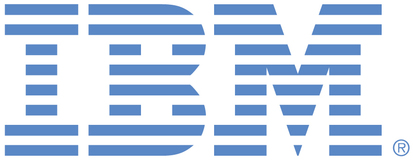
This is an IBM Automation portal for Cloud Management, Technology Cost Management, Network Automation and AIOps products. To view all of your ideas submitted to IBM, create and manage groups of Ideas, or create an idea explicitly set to be either visible by all (public) or visible only to you and IBM (private), use the IBM Unified Ideas Portal (https://ideas.ibm.com).
Shape the future of IBM!
We invite you to shape the future of IBM, including product roadmaps, by submitting ideas that matter to you the most. Here's how it works:
Search existing ideas
Start by searching and reviewing ideas and requests to enhance a product or service. Take a look at ideas others have posted, and add a comment, vote, or subscribe to updates on them if they matter to you. If you can't find what you are looking for,
Post your ideas
Post an idea.
Get feedback from the IBM team and other customers to refine your idea.
Follow the idea through the IBM Ideas process.
Specific links you will want to bookmark for future use
Welcome to the IBM Ideas Portal (https://www.ibm.com/ideas) - Use this site to find out additional information and details about the IBM Ideas process and statuses.
IBM Unified Ideas Portal (https://ideas.ibm.com) - Use this site to view all of your ideas, create new ideas for any IBM product, or search for ideas across all of IBM.
ideasibm@us.ibm.com - Use this email to suggest enhancements to the Ideas process or request help from IBM for submitting your Ideas.

@Guest comments -
So in simple terms it seems to come down to "Hosts, subnets or groups" and "Peer hosts, subnets or groups" really just a group of subnets / ports for each of these (that have been "manually" defined.
So we want to see traffic between this "complex rule" and "another complex rule" where a complex rule for example, teams is as per https://learn.microsoft.com/en-us/microsoft-365/enterprise/urls-and-ip-address-ranges?view=o365-worldwide52.112.0.0/14, 52.122.0.0/15, 2603:1063::/38UDP: 3478, 3479, 3480, 3481
So if a complex rule can be created (by an admin) and then shared, so available for anyone to use (as per their example). If we can do this we'd be 80% or more across the most common use cases CIO use Riverbed for.
Let me know if this makes sense and want to drill more into. I can raise an idea but this is really the explanation of the idea previously raised (flow reporting that is not device-centric)
it looks like we want make it easier and more flexible for the user to have pre-defined/ saved flow filters that match business logic and that can be used to quickly drill into the report data and do enrichment/name resolution/grouping of the results
business logic would include complex filters for hosts, subnets, regions, apps
reference points of existing functionality are named segments/subnets used for grouping/resolution at report time and app profiles/category used for grouping/resolution at ingestion but limited to 5-tuple in terms of flow fields.
We should extend this profile definition to all fields in the flow records like Kubernetes node/pod/namespace for example.
Provide API support to provision these profiles via script
@Guest
this idea look similar to https://bigblue.aha.io/ideas/ideas/SEV1-I-410
As we discussed, these use cases are possible using flow filters that make use of network segments/subnets. We can make it easier for the user by providing report variables for filters and support for more complex filters ( which will be available in 8.0)